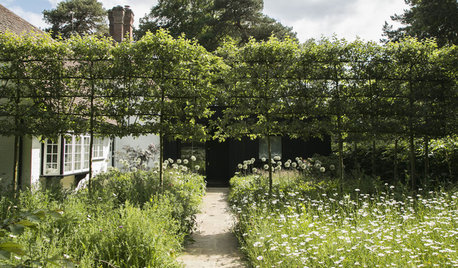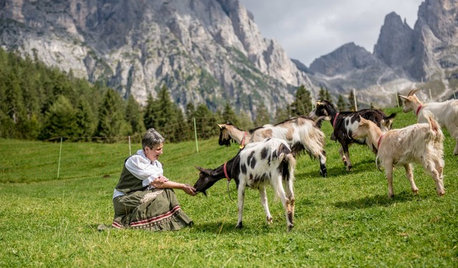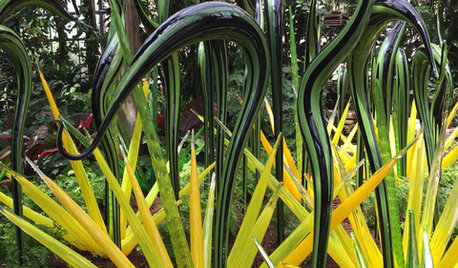Plant new apple tree or wait and see?
sam_ny
11 years ago
Related Stories

EDIBLE GARDENSHow to Add an Apple Tree to Your Edible Garden
Readily available, beautiful and fragrant, apple trees offer four-season interest along with crisp, juicy fruit
Full Story
GARDENING AND LANDSCAPINGCrab Apple Trees Set Off a Stylish English Courtyard
A structure of pleached crab apple trees, bordered by a wildflower meadow, links a minimalist addition to an old house in Buckinghamshire
Full Story
HOUSEPLANTSSee How Fiddleleaf Fig Trees Can Liven Up Your Decor
The tropical houseplant with big green leaves adds a cheerful and striking design element to rooms
Full Story
ARBOR DAY8 Reasons to Plant a Great Tree
Beauty is its own reward, but the benefits of planting the right tree in the right place go way beyond looks
Full Story
REMODELING GUIDESThe Case for Waiting to Remodel
We know, you're excited to make your home match your vision. But your vision may change once you've lived there awhile
Full Story
BEFORE AND AFTERSSee 6 Yards Transformed by Losing Their Lawns
Wondering whether a turf lawn is the best use of your outdoor space? These homeowners did, and they found creative alternatives
Full Story
FARMHOUSESWorld of Design: See How 9 Families Live and Farm on Their Land
Join us as we visit the homes and farms of passionate food producers and hear about rural life around the globe
Full Story
EVENTSSee ‘Chihuly in the Garden’ at the Atlanta Botanical Garden
The glass artist’s work is well-sited to complement and contrast with beautiful plantings. His new installation opens Saturday
Full Story
GARDENING GUIDESPlant Black Cherry Trees for the Birds and Bees
Plant Prunus serotina in the Central and Eastern U.S. for spring flowers, interesting bark and beautiful fall color
Full Story
TREES7 Deer-Resistant Flowering Trees to Plant this Fall
If you live in a neighborhood with roaming deer, consider these beautiful trees that won't tempt hungry guests
Full StoryMore Discussions








ltilton
alan haigh
Related Professionals
West Milford Landscape Architects & Landscape Designers · Windham Landscape Architects & Landscape Designers · Carson Landscape Architects & Landscape Designers · South Orange Landscape Architects & Landscape Designers · Brentwood Landscape Contractors · Matthews Landscape Contractors · Wakefield Landscape Contractors · Arlington Landscape Contractors · Barrington Landscape Contractors · Belvedere Park Landscape Contractors · Lemoore Landscape Contractors · Middletown Landscape Contractors · Pine Hills Landscape Contractors · Pleasant Prairie Landscape Contractors · San Benito Landscape Contractorssam_nyOriginal Author
Scott F Smith
northwoodswis4
ltilton
sam_nyOriginal Author
alan haigh
sam_nyOriginal Author
milehighgirl
murkwell
alan haigh
sam_nyOriginal Author